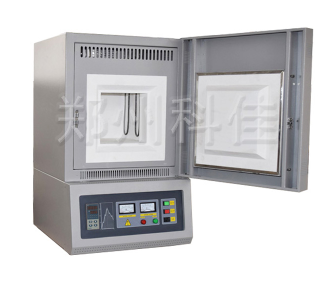As a commonly used high-temperature heat treatment equipment for brazing and sintering, the customized 1700 degree box type muffle furnace is highly favored by various university laboratories, enterprise laboratories, and industrial and mining enterprises. Some requirements require customization due to their special nature. So, what aspects should be paid attention to when customizing the 1700 degree box type muffle furnace? Let’s take a detailed look below!

Box type resistance furnace with a maximum temperature of 1700 ℃ (click on the image to view product details)
1. Core performance parameters
Temperature control accuracy
Temperature control accuracy: It needs to reach ± 1 ℃ to ensure the stability of the experiment or production process.
Temperature control system: adopting PID intelligent regulation and B-type dual platinum rhodium thermocouple, supporting multi-stage programming (such as more than 30 stages) to meet complex process requirements.
Safety margin: A maximum temperature margin of 100 ℃ should be reserved (if the equipment is rated at 1700 ℃, the actual long-term operating temperature is recommended to be ≤ 1600 ℃) to cope with process fluctuations.
temperature uniformity
Furnace temperature difference: By using a four point heating layout and optimizing the temperature field design, the temperature difference at 10 temperature points inside the furnace is ensured to be ≤ ± 5 ℃, avoiding uneven heating of the sample.
Heating element: Silicon molybdenum rod (resistant to high temperature of 1700 ℃) is selected, and the cold end length ≥ 210mm can reduce the furnace top temperature. The 7mm thick heating end has higher bending resistance.
heating rate
Rapid heating: High end models can raise the temperature from room temperature to 1700 ℃ within 2 hours, improving experimental efficiency.
Controllable heating: supports precise speed control to meet special process requirements such as catalyst activation.
2. Furnace structure and materials
Furnace size
Standard volume: 1L (100 × 100 × 100mm) to 1000L (1000 × 1000 × 1000mm), supports non-standard customization.
Sample space: The furnace volume should be at least 1.5 times the total volume of the sample to ensure uniform heating.
thermal insulation material
Aluminum oxide polycrystalline fiber: Adopting vacuum forming technology, it has low thermal conductivity, better insulation performance, and is more energy-efficient.
Graphite furnace: suitable for vacuum or atmospheric environments, but attention should be paid to the risk of oxidation at high temperatures.
Furnace door design
Sealing: Equipped with ceramic fiber sealing strips to reduce heat leakage.
Safety function: Side opening or revolving door design, supporting locking function and power-off protection for door opening to prevent burns.
3. Safety and operational design
Multiple protection devices
Overtemperature alarm: When the furnace temperature exceeds the set upper limit, the power is automatically cut off and an alarm is triggered.
Leakage protection: If leakage is detected, the power will be immediately cut off to ensure operational safety.
Overcurrent/overvoltage protection: prevents equipment from being damaged due to abnormal current or voltage.
operating interface
Intelligent control: equipped with a touch screen or intelligent PID segmented instrument, supporting real-time monitoring of temperature curves and data recording.
Remote monitoring: Some models integrate IoT modules, which can simultaneously track multiple sets of process parameters.
Ventilation and cooling
Double layer shell+air-cooled system: surface temperature ≤ 45 ℃ to prevent burns.
Optional water cooling system: Quickly cool the furnace to shorten the experimental cycle.
4. Customized services and costs
Customized options
Furnace size: Adjust the length, width, and height ratio according to the sample size, and support customized irregular structures.
Function expansion: Optional large screen paperless recorder, RS232 communication interface, Baota mouth air inlet (inert gas protection), etc.
Atmosphere control: Supports vacuum environment (vacuum degree ≤ 10 ⁻ ³ Pa) or multiple atmospheres (such as inert gas, oxidizing gas).

Large scale 1700 degree customized atmosphere furnace (click on the picture to view product details)
5. Maintenance and after-sales service
routine maintenance
Cleaning and maintenance: Regularly clean the residue in the furnace and avoid using water or damp cloth to wipe electrical components.
Component inspection: Regularly check whether the power cord, heating element, and temperature control system are securely connected and whether there is any aging phenomenon.
Record usage: Record the temperature, time, and other parameters of each use to detect abnormalities in a timely manner.
after-sales service
Warranty period: Priority should be given to suppliers who provide 1-year free warranty (excluding vulnerable parts) and lifetime maintenance services.
Repair response: Confirm whether the supplier has the ability to respond quickly to repairs.Click to learn more 1700 degree customized muffle furnaces! Or click on online customer service to learn more about product information!